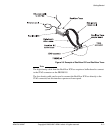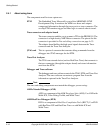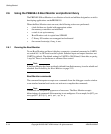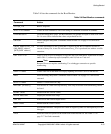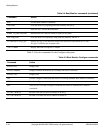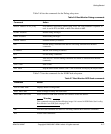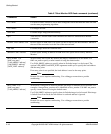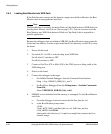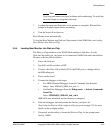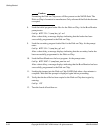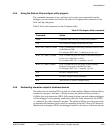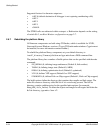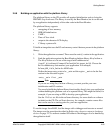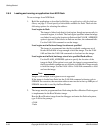
Getting Started
ARM DUI 0224F Copyright © 2003-2007 ARM Limited. All rights reserved. 2-19
2.6.2 Rebuilding the Boot Monitor
All firmware components are built using GNUmake, which is available for UNIX,
Linux and for most Windows versions. (To use GNUmake under windows Cygwin must
be installed, for more information contact Redhat.)
Because the platform library used by the Boot Monitor requires callout startup routines
support specific to RVCT, the Boot Monitor (and any application that uses the platform
library for directing STDIO) can only be rebuilt using RVCT tools.
To rebuild the Boot Monitor, set your default directory to
install_directory/Firmware/Boot_Monitor
and type
make
from a DOS command line.
You can specify the following build options after the
make
command:
•
BIG_ENDIAN=1/0
, defining image endianness (Default 0, little endian)
•
THUMB=1/0
, defining image state (Default 0, ARM)
•
DEBUG=1/0
, defining optimization level (Default 0, optimized code)
•
VFP=1/0
, defines VFP support (Default 0, no VFP support)
•
DISKONCHIP=1/0
, defines Disk-on-Chip support (Default 1, Disk-on-Chip support)
Note
The image must be build as a simple image. Scatter loading is not supported.
The build options define the subdirectory in the
Builds
directory that contains the
compile and link output:
<Debug>_<State>_<Endianness>_Endian + further component specific options
For example,
Release_ARM_Little_Endian
or
Debug_Thumb_Big_Endian_NoDiskOnChip
.
After rebuilding the Boot Monitor, load it into either NOR flash or the NAND flash
Disk-on-Chip, see Loading Boot Monitor into NOR flash on page 2-20 and Loading
Boot Monitor into Disk-on-Chip on page 2-21.



